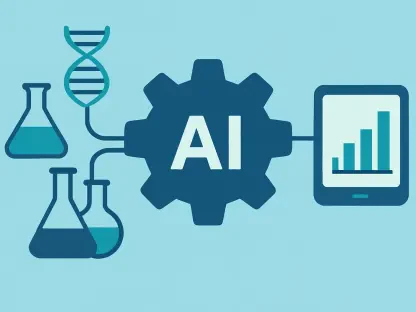In recent years, the pharmaceutical and biotechnology sectors have experienced a dynamic landscape in mergers and acquisitions (M&A). From major multimillion-dollar deals to strategic acquisitions targeting high-demand therapeutic areas, the industry has witnessed fluctuations driven by various market conditions. This article delves into the trends shaping M&A activity from 2018 to 2024, highlighting key deals, financial motivations, and strategic priorities.
The Role of M&A in Drug Development
Mergers and acquisitions are pivotal in the pharmaceutical and biotechnology industries, often equating the significance of scientific breakthroughs. Companies use M&A as a strategic tool to accelerate drug development, access new technologies, and bring innovative medicines to market faster. These deals serve as critical catalysts, enabling companies to diversify their portfolios and manage risks associated with drug development. The integration of smaller, innovative firms allows larger companies to overcome innovation stagnation and enhance their research pipelines. This strategy not only fosters the exploration of new therapeutic areas but also ultimately benefits patients with advanced and more effective treatments.
Furthermore, M&A activity has facilitated the rapid commercialization of breakthrough therapies. By acquiring companies with promising drug candidates and advanced technologies, larger pharmaceutical firms can expedite the development and distribution of novel treatments. This strategy is crucial in addressing unmet medical needs and ensuring that patients receive cutting-edge therapies in a timely manner. The role of M&A in this context underscores its importance as a driver of both scientific and commercial advancement in the healthcare sector.
Peaks and Troughs: Analyzing M&A Activity Over the Years
The late 2010s saw a significant surge in M&A activity within the pharmaceutical and biotechnology sectors. High-profile deals like Takeda’s $62 billion acquisition of Shire and Bristol Myers Squibb’s $74 billion purchase of Celgene marked a period of strategic consolidation. These deals aimed to strengthen positions in high-value therapeutic areas such as rare diseases and oncology. The strategic rationale behind these acquisitions was to bolster pipelines with promising late-stage drug candidates, thus ensuring long-term growth and competitive advantage.
However, the M&A landscape faced challenges in 2021 and 2022 due to global economic conditions and rising interest rates. Companies became more cautious, leading to a decline in deal activity. Despite these hurdles, strategic acquisitions continued, as seen with Gilead’s $21 billion purchase of Immunomedics and AstraZeneca’s $39 billion acquisition of Alexion Pharmaceuticals. These deals highlighted the industry’s focus on long-term growth and expansion into lucrative therapeutic segments. The downturn in activity during these years illustrates the sector’s vulnerability to broader economic fluctuations but also its resilience in pursuing strategic opportunities despite market constraints.
Financial and Strategic Drivers of M&A
Economic factors, including interest rates and overall market conditions, significantly impact M&A activity in the pharmaceutical and biotech sectors. Rising interest rates, in particular, can make financing deals more challenging, leading companies to reassess their acquisition strategies. However, the drive to diversify product portfolios and enter new therapeutic areas often outweighs these financial constraints. The strategic imperatives behind M&A are deeply rooted in the need to maintain a competitive edge, access new technologies, and mitigate risks associated with drug development.
Strategically, M&A allows companies to address declining internal innovation, broaden their therapeutic focus, and take advantage of market opportunities. For instance, the recent rebound in activity during 2023 and 2024 is motivated by the industry’s interest in expanding into areas like obesity treatment and advanced technologies, including antibody-drug conjugates and genetic therapies. These acquisitions not only enable companies to stay ahead in the competitive landscape but also reinforce their commitment to innovation and patient-centric care. The financial and strategic drivers behind M&A reflect a complex interplay of market conditions and the incessant quest for growth and sustainability.
Therapeutic Focus and Emerging Trends
The focus on high-value therapeutic areas is a dominant theme in recent M&A activities. Cancer, rare diseases, and immune system disorders are consistently at the forefront, driven by significant unmet medical needs and potential for substantial financial returns. These areas offer opportunities for companies to innovate and provide life-changing treatments to patients. The emphasis on these therapeutic segments underscores the industry’s commitment to addressing critical health challenges and advancing medical science.
Emerging trends indicate a growing interest in therapies targeting neurological disorders and obesity. Advances in understanding disease mechanisms and the development of novel therapeutic platforms have prompted companies to invest in these areas. The high premiums paid for promising pipelines reflect the industry’s commitment to future growth and innovation. Companies are increasingly recognizing the potential of these therapeutic areas to deliver significant clinical and commercial benefits, thus shaping their M&A strategies accordingly. The focus on emerging trends highlights the dynamic nature of the pharmaceutical and biotechnology sectors and their continuous evolution in response to scientific and market developments.
Notable Deals and Strategic Acquisitions
Key M&A deals from 2018 to 2024 illustrate the strategic priorities of pharmaceutical and biotechnology companies. Vertex’s $4.9 billion acquisition of Alpine Immune Sciences, AstraZeneca’s $1.3 billion purchase of CinCor Pharma, and Pfizer’s massive $43 billion acquisition of Seagen underscore the industry’s pursuit of innovation and market leadership. These transactions reflect a strategic drive to enhance research capabilities, expand therapeutic portfolios, and secure long-term growth. The high premiums paid in these deals highlight the value placed on companies with robust pipelines and advanced technologies.
These deals also highlight the role of financial advisors and legal experts in navigating complex negotiations and ensuring successful integrations. The involvement of these professionals is crucial in managing the intricacies of such high-stake transactions and achieving favorable outcomes. The high premiums paid for these acquisitions demonstrate the industry’s confidence in the acquired companies’ potential to deliver future growth and innovation. By securing promising assets through M&A, pharmaceutical giants position themselves to address unmet medical needs and sustain their market leadership.
Adapting to Market Conditions
Pharmaceutical companies have shown remarkable adaptability in response to market fluctuations. During economic downturns and periods of high interest rates, companies strategically slowed their M&A activities, focusing on internal innovation and cost management. Conversely, improved economic conditions and the emergence of new therapeutic opportunities in 2023 and 2024 have reinvigorated the M&A landscape. This adaptability is crucial for maintaining a competitive advantage and ensuring sustained growth. By adjusting strategies based on market conditions, companies can optimize resource allocation, mitigate risks, and seize new opportunities, ultimately enhancing their market positions.
The ability to pivot and adapt to changing market dynamics underscores the resilience of the pharmaceutical and biotechnology sectors. Companies’ strategic responses to economic fluctuations and market opportunities highlight their proactive approach to navigating complex business environments. This adaptability is a testament to the industry’s commitment to innovation, patient-centric care, and long-term growth. The lessons learned from these market fluctuations continue to shape M&A strategies, ensuring that companies remain agile and competitive in an ever-evolving landscape.
Innovation-Driven M&A: A Focus on Future Growth
In recent years, the pharmaceutical and biotechnology sectors have been highly active in the realm of mergers and acquisitions (M&A). This activity has ranged from substantial multimillion-dollar deals to more targeted acquisitions aimed at high-demand therapeutic areas. Various market conditions have significantly impacted this landscape, causing notable fluctuations in M&A dynamics.
From 2018 to 2024, numerous trends have emerged, influencing M&A activity within these industries. Companies have been motivated by several financial factors, including the pursuit of synergies, the desire to expand their product pipelines, and the goal of enhancing their market competitiveness. Additionally, strategic priorities such as accessing innovative technologies, reaching new markets, and improving overall efficiency have played crucial roles.
This article examines these trends in M&A activity, shedding light on the most significant deals during this period. It explores the financial and strategic motivations behind these transactions, providing a comprehensive overview of how the pharmaceutical and biotechnology sectors are evolving. By scrutinizing the key drivers and significant acquisitions, we aim to offer insights into the future trajectory of M&A activities in these crucial industries.









